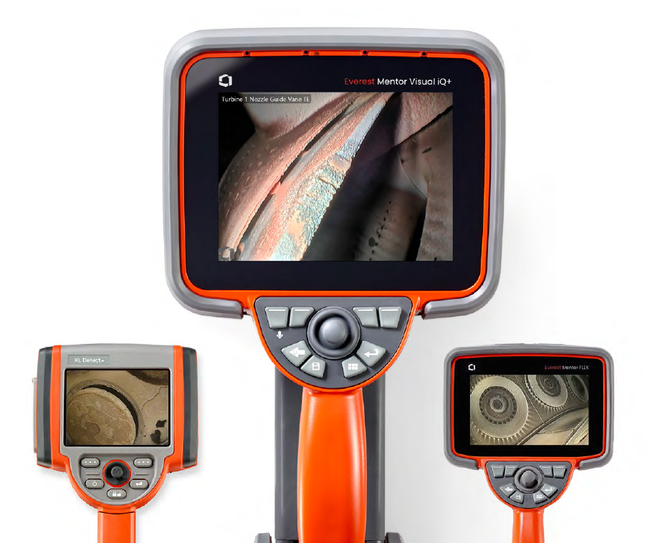Precision Beyond The Naked Eye: Understanding The Benefits Of Inspection Videoscopes
Every flaw, defect, or inconsistency can have far-reaching consequences, impacting product quality, safety, and ultimately, consumer satisfaction. Traditionally, identifying such imperfections relied heavily on the keen eyes of skilled inspectors, often supplemented by rudimentary tools like magnifying glasses or borescopes. However, as technology continues to advance, so too do the methods of inspection. One such innovation that has revolutionized the field is the inspection videoscope.
Introduction To Inspection Videoscopes
Inspection videoscopes are sophisticated instruments designed to provide visual access to hard-to-reach or inaccessible areas within machinery, equipment, or structures. They consist of a flexible insertion tube equipped with a miniature camera and LED lighting, allowing real-time imaging of the inspection area. The images captured by the videoscope are displayed on an external monitor or screen, enabling inspectors to scrutinize the condition of components with unprecedented clarity and detail.
The Evolution of Inspection Technology
The genesis of inspection videoscopes can be traced back to the mid-20th century when borescopes, the precursors to modern videoscopes, were first developed for industrial applications. Borescopes, however, were limited by their rigid shafts and eyepiece-based viewing, which restricted maneuverability and made prolonged inspections uncomfortable for operators.
The advent of digital imaging and miniaturization in the late 20th century paved the way for significant advancements in inspection technology. Inspection videoscopes emerged as a more versatile and user-friendly alternative to traditional borescopes, offering flexible insertion tubes and high-resolution video displays that revolutionized the inspection process.
Benefits of Inspection Videoscopes
The benefits of inspection videoscopes are manifold, offering manufacturers and inspectors alike a multitude of advantages over conventional inspection methods.
Enhanced Visualization:
Inspection videoscopes provide inspectors with unparalleled visibility into confined spaces, allowing them to detect defects or anomalies that would otherwise remain hidden. The high-definition imaging capabilities of videoscopes enable inspectors to zoom in on specific areas, ensuring thorough scrutiny of critical components.
Improved Efficiency:
By eliminating the need for disassembly or dismantling of equipment, inspection videoscopes streamline the inspection process, saving valuable time and resources. Inspectors can quickly assess the condition of machinery or structures without causing disruption to production schedules, thereby minimizing downtime and maximizing operational efficiency.
Remote Inspection:
Inspection videoscopes with remote watching features let inspectors do their jobs from a safe distance, lowering the chance of being exposed to dangerous situations or environments. It is very helpful to be able to do inspections from a distance in fields like aerospace, automotive, and oil and gas, where getting into small or dangerous places can be dangerous.
Documentation and Analysis:
Inspection videoscopes allow inspectors to capture images and videos of inspection findings for documentation and analysis purposes. These digital records are useful proof that legal standards and quality control requirements were met. They also make it easier to be accountable and track things during the inspection process.
Cost Savings:
By facilitating early detection of defects or malfunctions, inspection videoscopes help prevent costly equipment failures or breakdowns. Preventative maintenance based on videoscope inspection results can make tools and equipment last longer, which saves money in the long run on repair and replacement costs.
Versatility:
An inspection videoscope is a useful tool that can be used in many different fields and situations, from engineering and manufacturing to maintenance and repair. With interchangeable probes, adjustable lighting, and customizable features, videoscopes can accommodate various inspection requirements and environments with ease.
Training and Education:
Inspection videoscopes serve as valuable training tools for aspiring inspectors and technicians, providing hands-on experience in conducting visual inspections and interpreting inspection data. By simulating real-world inspection scenarios, videoscope training programs help develop essential skills and competencies in the field of non-destructive testing and quality assurance.
Applications of Inspection Videoscopes
The versatility and flexibility of inspection videoscopes make them indispensable tools across a diverse array of industries and applications. Some common applications of inspection videoscopes include:
Manufacturing Inspections:
Inspection videoscopes are used to inspect internal components, welds, and assemblies in manufacturing processes, ensuring compliance with quality standards and specifications.
Aerospace Maintenance:
In the aerospace industry, inspection videoscopes are employed to inspect aircraft engines, turbine blades, and critical structural components for signs of wear, corrosion, or fatigue.
Automotive Diagnostics:
Automotive technicians use inspection videoscopes to examine engine cylinders, fuel injectors, and exhaust systems, diagnosing issues and performing preventative maintenance.
Pipeline Integrity Testing:
In the oil and gas business, inspection videoscopes are used to look for corrosion, cracks, and leaks in pipelines, tanks, and pressure vessels. This keeps infrastructure safe and protects the environment.
Structural Inspections
: Building inspectors and engineers utilize inspection videoscopes to assess the condition of bridges, tunnels, and other infrastructure for signs of deterioration or structural damage.
Conclusion
In conclusion, inspection videoscopes represent a paradigm shift in the field of non-destructive testing and inspection, offering unparalleled precision, efficiency, and versatility. By providing visual access to hard-to-reach areas and delivering high-definition imaging capabilities, videoscopes empower inspectors to conduct thorough and accurate inspections across a wide range of industries and applications. As technology keeps getting better, inspection videoscopes will become even more important for making sure that products are safe, of good quality, and reliable. This will solidify their place as essential tools in today’s business world.
Stay in touch to get more updates & news on Discover Headline!







